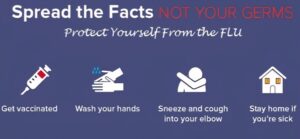In the United States, flu season typically runs from October to May, with peak activity between December and February. The most important protection is an annual flu vaccine, supplemented by healthy habits like frequent hand washing and avoiding sick people.
When to get a flu shot
The Centers for Disease Control and Prevention (CDC) recommends getting your flu vaccine by the end of October.
Timing: It takes about two weeks after vaccination for your body to develop enough antibodies to protect against the flu.
Later in the season: If you miss the October window, getting vaccinated later in the season can still provide significant benefits, as flu activity can last into May.
High-risk individuals: For certain high-risk groups, including adults 65 and older, waiting until September or October is recommended to ensure strong immunity lasts through the peak season.
Best practices for protection
In addition to getting vaccinated, the CDC recommends these actions to help prevent the flu and other respiratory viruses:
- Wash your hands often with soap and water for at least 20 seconds. If not available, use an alcohol-based hand sanitizer.
- Avoid touching your eyes, nose, and mouth to prevent the spread of germs.
- Limit contact with people who are sick.
- Stay home when sick. The CDC recommends staying home for at least 24 hours after a fever has passed without the use of fever-reducing medication.
- Cover your coughs and sneezes with a tissue or your upper sleeve.
- Clean and disinfect frequently touched surfaces, such as doorknobs, light switches, and keyboards.
- Take steps for cleaner air by improving ventilation or gathering outdoors.
- Maintain healthy habits, including getting plenty of sleep, exercising, managing stress, and staying hydrated.
If you found this helpful, consider sharing with colleagues and friends to help everyone stay healthier this flu season. For more updates on public health guidance, follow https://www.cdc.gov

